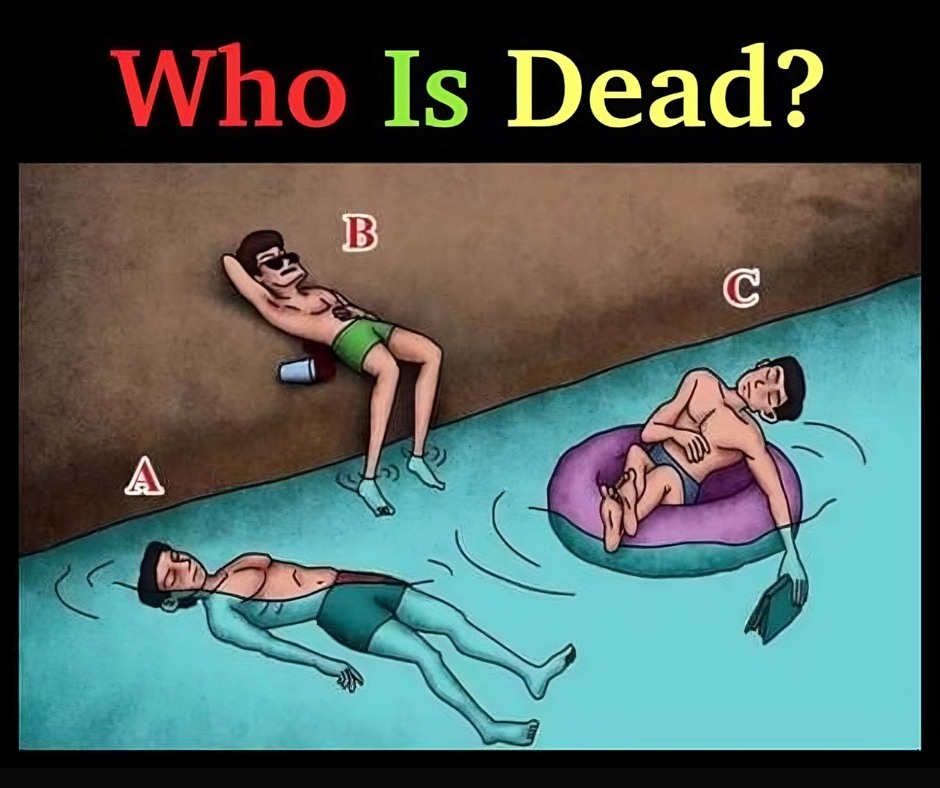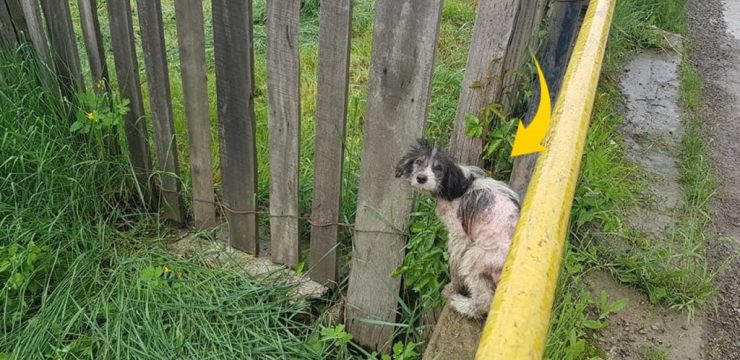Engaging with thought-provoking riddles and puzzles can be a powerful way to shake off the fatigue and stress of a busy workday. By shifting your focus to the challenge in front of you, your mind gets a break from the monotony of routine tasks, offering a refreshing mental escape.
These brain teasers do more than just relax the mind—they also encourage you to explore interesting and hidden perspectives within the puzzle. The process of carefully analyzing details, considering alternative interpretations, and arriving at a logical conclusion is not only rewarding but also intellectually stimulating, providing a valuable opportunity for personal growth and cognitive development.
Take, for example, the riddle presented in the image: “Who Is Not Alive?” The challenge is to carefully examine the details within the image to determine the correct answer.

Eliminating the Obvious Candidates
First, let’s look at Person B. You can see their legs are causing ripples in the water, indicating they’re alive and moving. So, we can rule out Person B as the answer to the riddle.
Now, let’s consider Person A. Many might assume that a floating body in the water signals death. However, that’s not necessarily true. It usually takes about 2-3 days for a dead body to float, as it initially sinks before rising to the surface. Therefore, just because Person A is floating doesn’t mean they’re deceased.
Identifying the Correct Answer
With Persons A and B out of the picture, let’s focus on Person C. Notice that Person C is holding a laptop, which is submerged in the water. They also seem to be in an unconscious state, hinting that they might be the one who is “not alive” in the context of this riddle.
To solve this puzzle, you need to carefully observe the details and use logical reasoning to arrive at the correct answer. By considering the clues and eliminating the unlikely scenarios, it becomes clear that Person C is the individual who is “not alive” in this particular situation.
Riddles like this challenge your problem-solving skills and encourage critical thinking. The process of analyzing details, exploring alternative interpretations, and arriving at a logical conclusion is both rewarding and intellectually stimulating.
Engaging with thought-provoking riddles and puzzles is a unique way to rejuvenate the mind, boost cognitive abilities, and foster a sense of accomplishment and social connection. By incorporating these activities into your daily routine, you can cultivate a healthy work-life balance, leading to improved productivity, creativity, and overall well-being.





